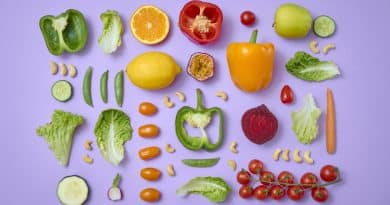60 Funny Foods that Start with M (Plus Cool Facts)
HurryTheFoodUp is reader-powered. If you click through using links on our site we may earn a small commission at no cost to you.
Ready to learn about the biggest banana in the world? Did you know the fruit of the money plant is rumoured to make you rich? Ever heard of a cow fruit?

Read on to discover some of the world’s most amusing foods that start with m, including some of the greatest food related facts you’ll be glad you ever learned. Seriously, learning about miracle fruit slightly blew my mind!
How have I defined what can be included on this list of foods beginning with M? I’ve used the definition of culinary fruits and vegetables, meaning that they are used as fruits and vegetables in cooking even if botanically or legally (for the purposes of taxes and regulations) they are not defined as such.
For other foods I’ve divided this list into categories: whole foods, dishes and processed foods beginning with M. This doesn’t include brands of foods that begin with M.
Without further ado, let’s jump into this list of foods that start with M.
Whole foods that start with M
Scroll on to see 53 whole foods that start with M. This list includes fresh fruits, vegetables and a few other whole foods for good measure – enjoy!
Malabar Plum
This fruit’s scientific name is Syzygium jambos and it is a type of rose-apple, so called for the fragrance that the ripe fruit gives off. Similar to guava fruit, but with fewer and bigger seeds, these fruits share the same jelly-like texture, juicy flesh and thin skin.
Malay Rose Apple
This apple is also known as Malay apple fruit, mountain apple, rose apple, Otaheite apple, pink satin-ash and is native to tropical Asia and Australia. It can be eaten raw or cooked and its scientific name is Syzygium malaccense.

Malus Sieversii
Malus sieversii is the scientific name for a wild apple which is native to the mountains of Central Asia and is actually considered to be the primary ancestor of most cultivated apples!
Mamey Sapote
Scientifically known as Pouteria sapota, eaten in many countries throughout Latin America, the mamey sapote fruit can be eaten raw but is usually made into foods such as milkshakes and ice-creams. I love when people find inventive ways of using fruit in desserts and snacks – reminds me of the spurious argument that chocolate is actually healthy since it comes from a bean – hah!
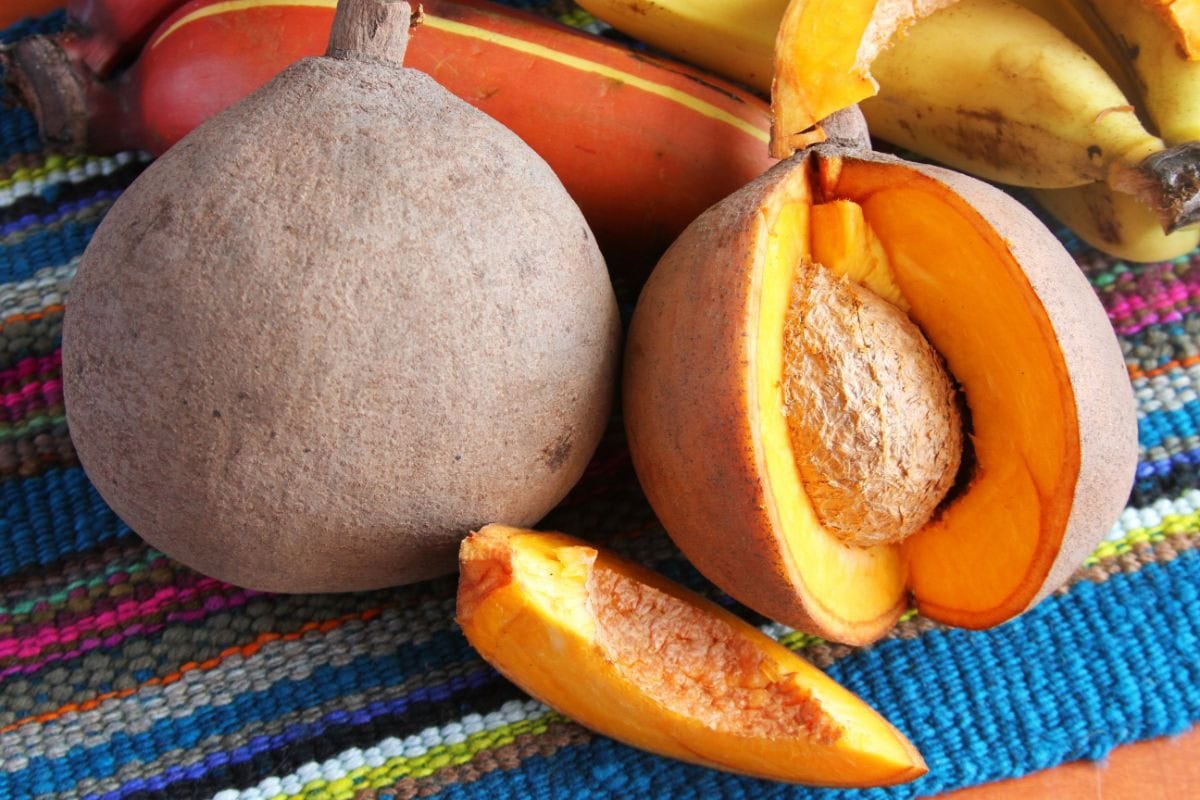
Mammee Apple Fruit
This fruit is not widely eaten outside of the Bahamas, the Caribbean and the French West Indies, but it has varied uses there: mixed with rum or coconut oil, its seeds are used to treat headlice and bed bugs, while the flesh of the fruit can be eaten in a fruit salad, jams or liquor. Its scientific name is Mammea americana. This versatility may not make it particularly, err, appetising, but it certainly does make it useful!
Manchurian apricot
This fruit is a variety of the Siberian apricot and is very resistant to cold, meaning it grows well in northeast China, Korea and Manchuria. Its scientific name is Prunus mandshurica but it is also called Manchurian apricot and scout apricot.
Manchurian cherry
Scientifically known as Prunus maackii, this cherry is native to Korea, Southeastern Russia, and, you guessed it, Manchuria. The fruit is often used for juice, jelly and jam.
Manchurian crab apple
Some people consider this fruit to be a variety of the Siberian crab apple, rather than a distinct fruit in itself. Its scientific name is Malus mandshurica.
Mandarin
Mandarin oranges are easy to peel and are enjoyed all around the world for their citrus, sweet taste and vitamin C levels among other health benefits. The two countries in the world that grow the most mandarin fruits are China and Spain, and these sweet oranges are known scientifically as Citrus reticulata.

Mango
There are two distinct genetic populations in mangoes today – the Indian type and the Southeast Asian type. Its binomial name is Mangifera indica.
Manilkara elata
While Manilkara elata is its scientific name, this fruit is more commonly known as cow fruit. It looks like an apple and has a milky texture and is often sold by street vendors in the Brazilian state of Para in South America. I’m really struggling to imagine what this fruit would taste like, so if you’ve tried it, please let me know in the comments!
Maqui Berry
This berry is native to Chile and adjacent regions of Southern Argentina, where they are harvested from the wild every year. This small fruit is also known as the Chilean Wineberry while its scientific name is Aristotelia chilensis.
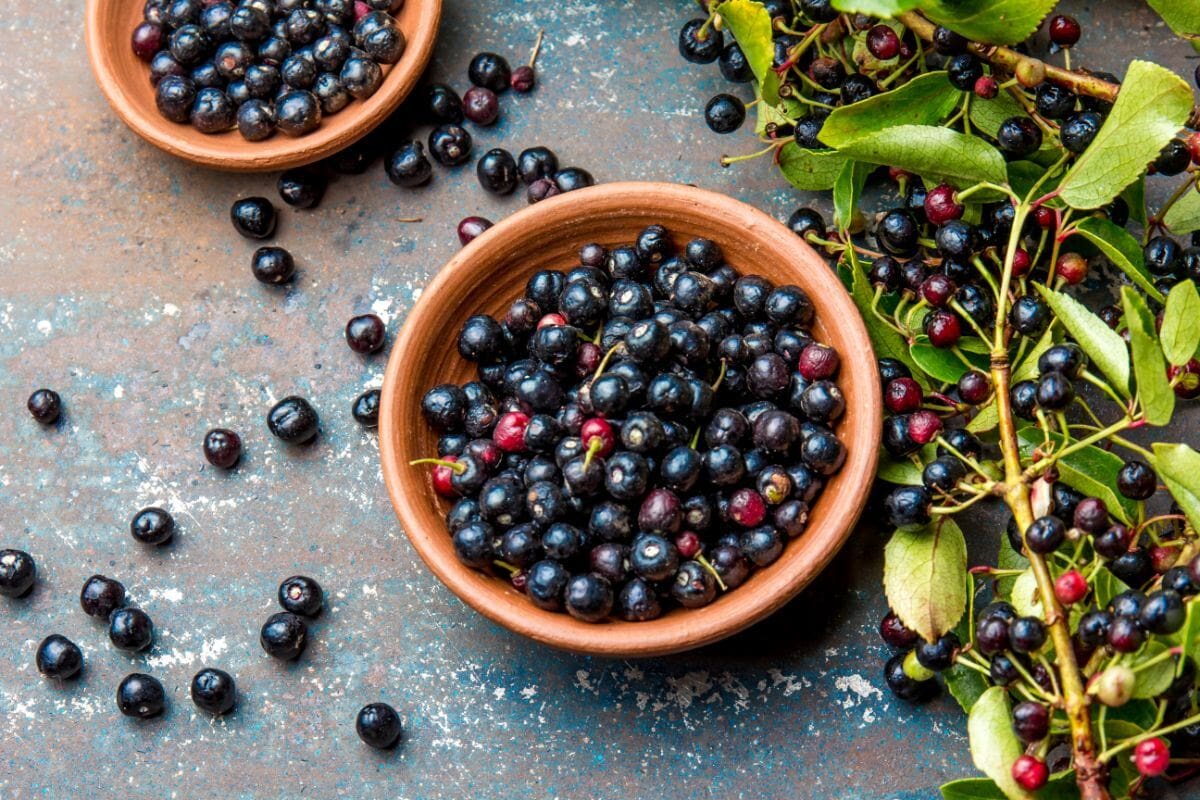
Marula
The marula fruit, known scientifically as Sclerocarya birrea, is a socioeconomically significant fruit in many African countries in East and West Africa, where it is fermented and sold as an alcoholic beverage.
Maypop
This passion fruit has a slightly tart, sweet flesh, similar to an apricot, thus earning it another name: the wild apricot. The maypop fruit grows on a perennial passion flower vine, which produces striking purple flowers as well as the delicious fruit. Its scientific name is the Passiflora incarnata but obviously maypop is the most amusing name invented for a fruit probably ever!
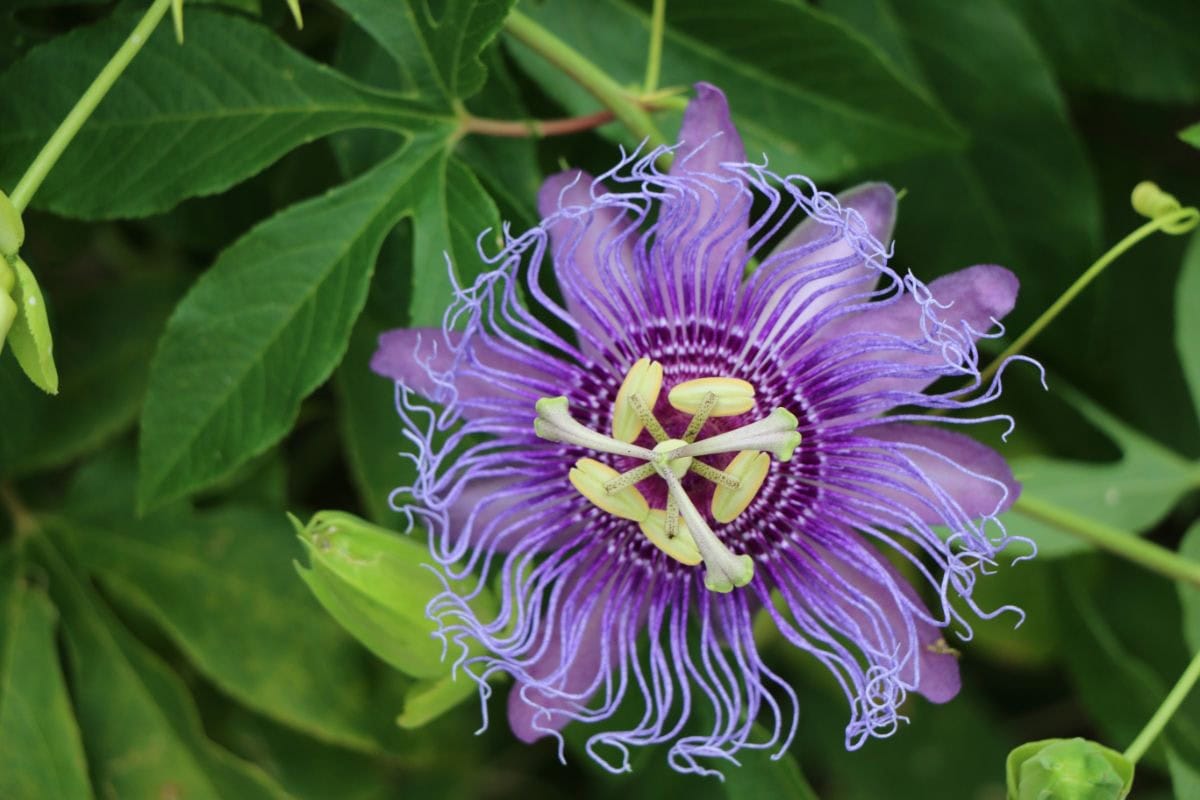
Medlar
This edible fruit has been cultivated since Roman times, and has acquired the rather cheeky common name of ‘monkey’s bottom’ in some parts of England. The fruits are hard and acidic when ripe so must be bletted (over-ripened) before they can be consumed. Its scientific name is Mespilus germanica.
Mexican Plum
The fruit ripens in late autumn/fall, is found in regions of Mexico and North America and its scientific name is Prunus mexicana.
Moriche Palm Fruit
This fruit grows on the moriche palm in Brazil, Columbia, Ecuador and Peru and prefers tropical climates. The scientific name of this tropical fruit is Mauritia flexuosa.
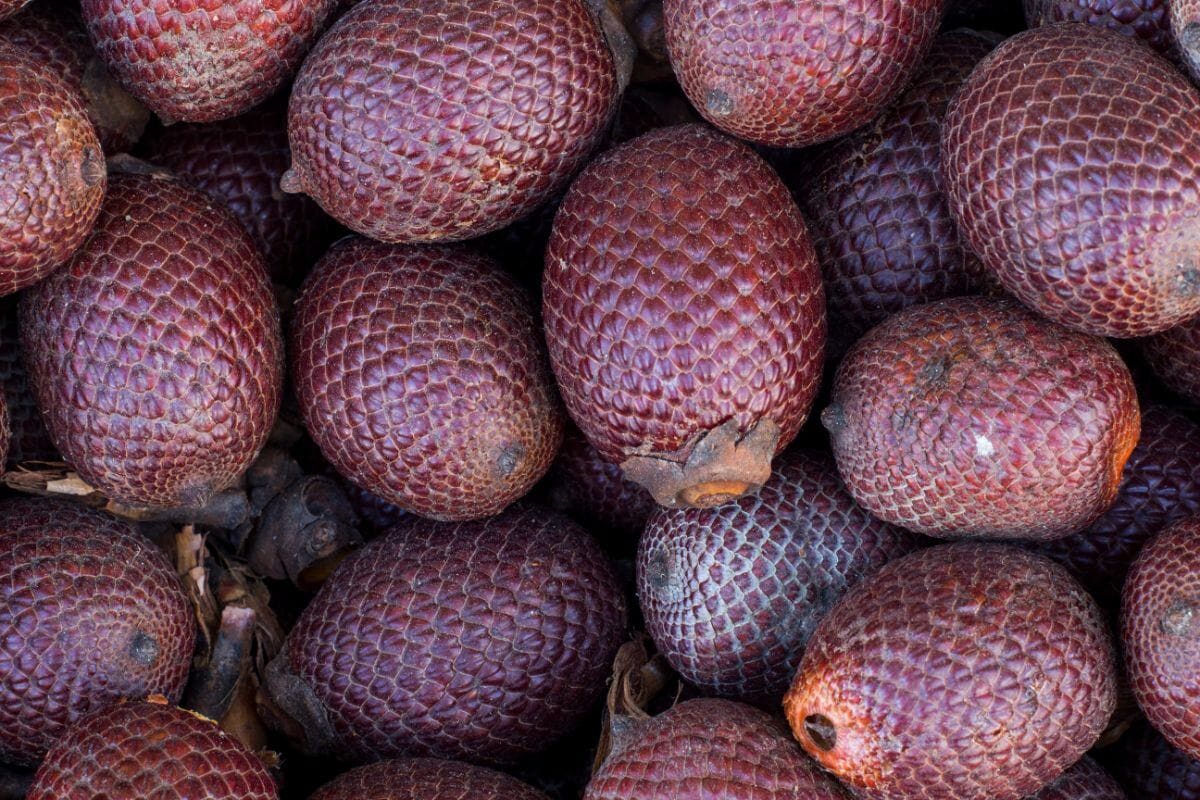
Mountain Serviceberry
These fruits are red, pear-shaped and darken to almost purple when ripe. This fruit’s scientific name is Amelanchier bartramiana.
Midgen Berry
This berry is native to Australia and is enjoyed as a bush-food for its sweet and gingery flavour. The berries are plump and white, and its scientific name is Austromyrtus dulcis.
Miracle Fruit
The rather more catchy common name for Synsepalum dulcificum refers to the ability of this berry, when eaten, to make any subsequently consumed sour food taste sweet.
The berry is relatively low in sugar itself but contains miraculin, which is a taste modifying compound, whose molecules bind to the taste buds masking the sour taste in any subsequently consumed food!
Miyama Cherry
This cherry is native to northeastern Asia and Eurasia, and its scientific name is Prunus maximowiczii. As well as edible cherries, the tree is useful for wood and for dyes produced from the bark and leaves.
Musa Ingens
Musa Ingens is the scientific name for the Great Highland Banana, which is the biggest banana growing on the biggest fruit tree in the world! This huge banana grows in Papua New Guinea and countries in Southeast Asia, like Indonesia, and tastes like sweet banana with a dash of citrus – sounds tasty!
Mulberry
There are 64 different species of mulberries which turn from pink to red during the ripening process, and the ripe fruits have a pleasant, sweet flavor. The scientific name for the genus is Morus.

Murray’s Plum
Also known as Prunus murrayana, scientifically, the shrub that grows this fruit native to Texas, in the United States and is critically endangered. The sweet fruit is red with white dots and a waxy skin. Apparently, it is so rare that nobody has seen Murray’s plum fruit since it was first scientifically described. Since there are no images of this fruit and you can’t exactly pick it up at the grocery store, this is one for the imagination!
Musk Melon
This fruit was invented by Elon Musk.
Jokes aside, Musk Melon refers to the collective group of sweet melons, whose binomial name is Cucumis melo. The fruit is a pepo, which means it is actually a berry with a fleshy centre without a stone.
Maitake Mushroom
Maitake means dancing mushroom in Japanese, which is apparently what people did when they first discovered the health benefits of this fungus! This type of mushroom has been suggested to have cancer fighting properties, help with cholesterol and diabetes. Grifola frondosa is its scientific name.
Maize
This cereal grain, which is also known as corn, is one of the largest staple foods in the world, with total production outstripping rice and wheat. Its scientific name is Zea mays.

Malabar Spinach
Basella alba is the scientific name for this leafy vegetable. It is found in tropical Asia and Africa and has a mild flavour.
Malanga
Also known as Taro, or Colocasia esculenta scientifically, this root vegetable similar to yams that is a staple in many South Asian and Oceanic regions. It is one of the most ancient cultivated foods and although toxic when raw, its leaves and corms are easily digestible when cooked.

Mallows
Not technically a single vegetable, but in fact a whole family of over 4,000 species, mallows include Okra (also known as Lady’s Fingers) and cacao, as well as cotton. These varieties make it one of the most economically significant families of flowering plants in the world! The scientific name for this family of plants is Malvaceae.
Manoa Lettuce
This is a type of lettuce that grows well in tropical regions, and is especially popular in Hawaii. Its leaves are medium to dark green and have a buttery, sweet flavor. Its scientific name is Lactuca Sativa.
Mangetout
Also known as snow peas, these edible pod-peas are eaten whole when ripe and enjoyed for their sweet and delicate flavour. Their scientific name is Pisum sativum.
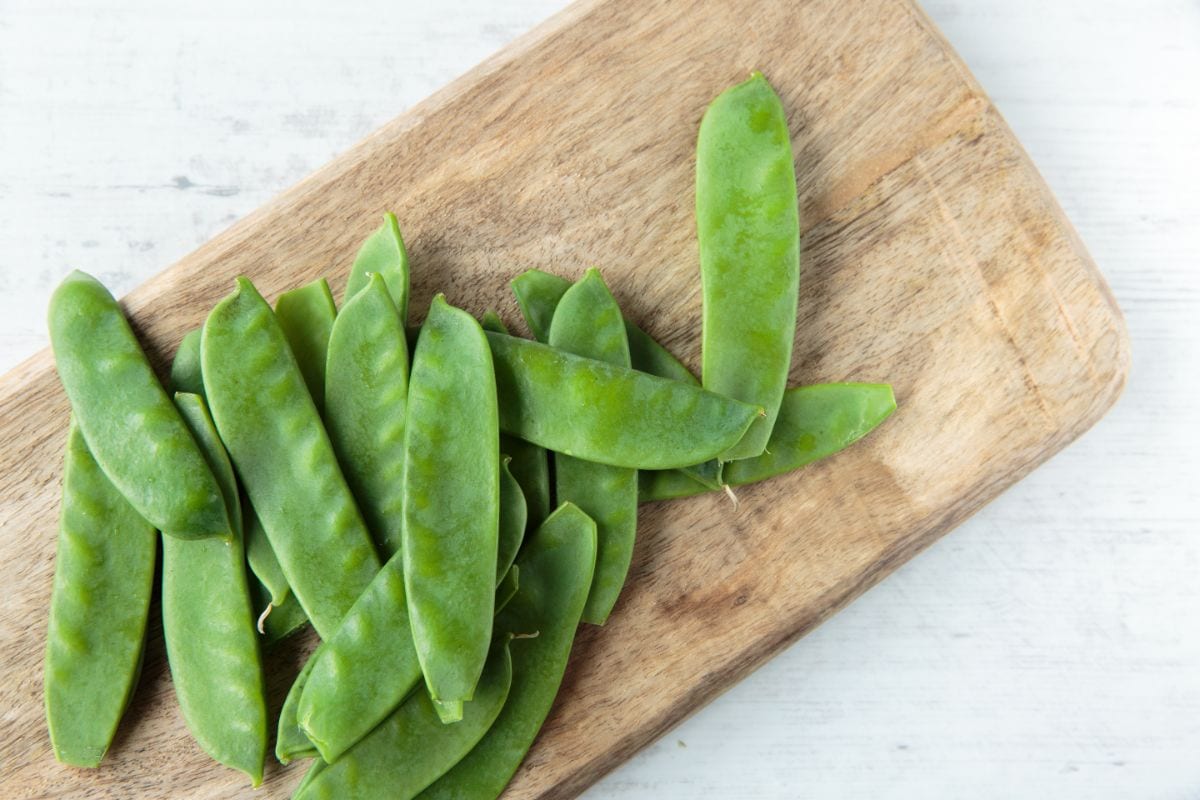
Mashua
Mashua is a flowering plant known for its edible tubers that are grown in Peru, Bolivia, Ecuador and Colombia. These tubers roasted in clay ovens are considered a delicacy in some regions. Their scientific name is Tropaeolum tuberosum.
Mauka
This root vegetable is grown in the Andes in cold, windy conditions. Its scientific name is Mirabilis expansa and it is hoped this crop will be cultivated further due to its resilience in harsh conditions.
Methi
Also known as fenugreek, or Trigonella foenum-graecum by its scientific name, the seeds and leaves of this plant are used extensively in the Indian sub-continent. The leaves of the plants are used as green vegetables in cooking.

Miner’s Lettuce
This vegetable, which is also known as Indian lettuce or winter purslane is eaten as a leaf vegetable and the whole plant is edible, except for its roots. Its scientific name is Claytonia perfoliata. Its popular name comes from the fact that miners used to eat this plant to avoid scurvy during the gold rush, when other fresh fruit and veg was not available!
Mizuna Greens
This dark green, leafy vegetable has a piquant, slightly spicy flavour when eaten raw, but can also be eaten cooked in stir fries and soups. It is a cultivar of Brassica rapa. It is also known as Japanese mustard greens.
Morchella
Morchella, or morel mushrooms, are a type of mushroom that have a honeycomb-like appearance. Their scientific name is Morchella esculenta.

Moringa Leaves
This tree is native to the Indian subcontinent and its scientific name is Moringa oleifera. Its roots have a taste similar to horseradish, while the seeds have a bitter flavour for which they are prized in Nigeria.
Moth Bean
Moth beans are a drought resistant legume. Whole or split beans can be cooked or fried and are particularly popular in the Indian state of Maharashtra. Their scientific name is Vigna aconitifolia.
Mooli
Also known as Daikon, this is a winter radish with a mild flavor that has long green leaves and a white root. Its scientific name is Raphanus sativus var. longipinnatus and its Japanese name, Daikon, simply means ‘big root’ – imaginative!
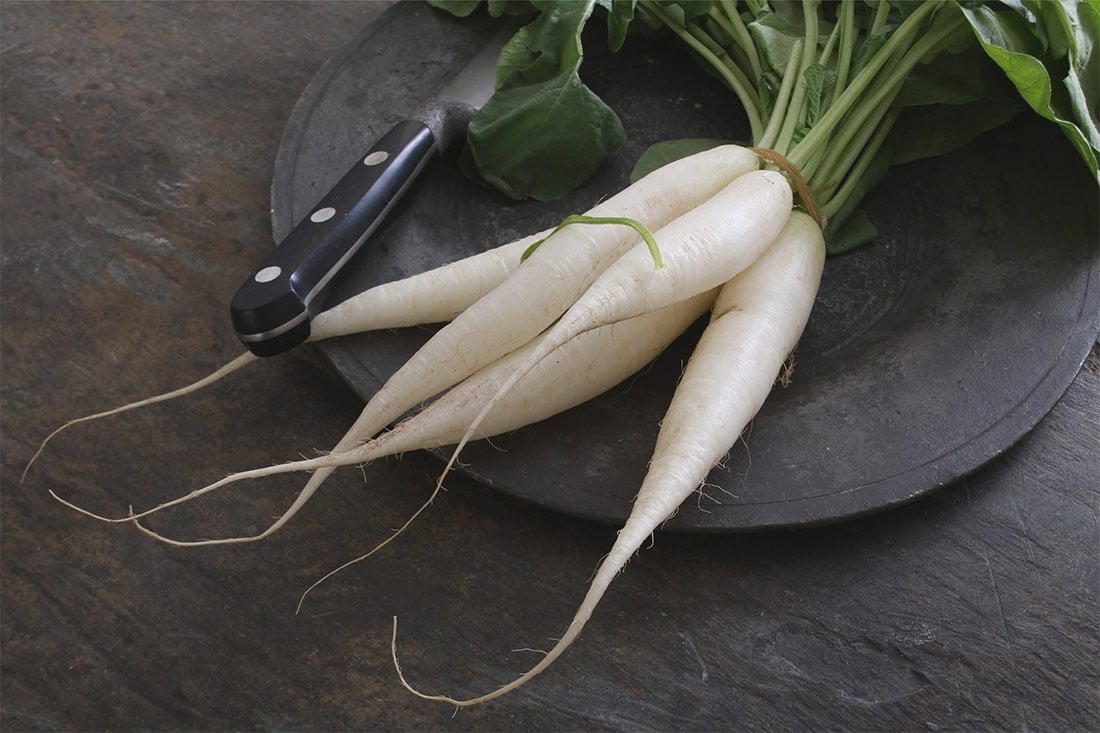
Mulukhiyah
This edible plant is also known as jute mallow or nalta jute. It is a good source of vitamins C, A and B vitamins. It is consumed widely throughout African and Asian countries and its scientific name is Corchorus olitorius.
Mushroom
Mushrooms are technically the fruiting body of a fungus but are used extensively in cooking throughout the world so definitely deserve a mention here! White button mushrooms are the most commonly cultivated mushroom today and their scientific name is Agaricus bisporus.
Mustard
No, not the condiment, though the seeds of this plant are what produce the sauce! White mustard seeds are used to make mustard, and their scientific name is Sinapis alba.
Mustard Greens
This leafy green vegetable is known as brown mustard and Chinese mustard, as well as by its scientific name Brassica juncea. These greens are a great addition to a balanced diet since they are good sources of the vitamins A, C and particularly K.

Mung Bean
Mung beans, or Vigna radiata by their scientific name, are a type of legume. They are used throughout southeast Asia and the middle east in curries, stews and ice creams.
Money Plant
The nuts that grow on the money plant have a similar taste to European chestnuts and are poisonous to rats, but not humans, when eaten raw. The tree is native to Central and South America and its scientific name is Pachira aquatica. There is no proven link between eating this fruit and unexpectedly coming into great wealth, but I guess it’s worth a shot!
Mozuku
Mozuku is the collective name for a group of brown algae that are eaten as a sea vegetable. Its scientific name is Cladosiphon okamuranus.

Mountain Sorrel
This flowering plant, whose scientific name is Oxyria digyna, is native to arctic regions. It is rich in vitamin C and is often eaten raw or cooked by Inuit people to treat or prevent scurvy.
Myrobalan
This is technically a fruit but is used as a culinary vegetable in savoury dishes such as dal. Its scientific name is Phyllanthus emblica.

Macadamia Nut
Macadamia nuts are indigenous to Australia and were an important source of bush food for Aboriginal people. Today they are imported and eaten around the world and since the 2010s South Africa has been the biggest producer of these nuts.
Mahi Mahi
These oily fish are found in the waters around the Gulf of Mexico, Costa Rica and Hawaii and are consumed globally. They are a surface dwelling type of fish meaning that they are caught by harpoon in many countries since they cannot dive.
Mint
It is estimated that 13 to 24 species of mint exist, including chocolate mint and lemon mint, which smell like, you guessed it, chocolate and lemon! It is an herb used extensively in cuisines throughout the world, from Indian to Arabic, and the ancient Greeks were known to rub it on their arms believing it would make them stronger.

Dishes that Start with M
Now, here are some dishes of foods that start with the letter M.
Mole Sauce
Popular in Mexican cuisine, and originating from the southern state of Oaxaca or Puebla (both states claim to have created it!), mole is made from ground spices. It comes in several colours, yellow, red and black, each sauce with its own distinct taste.

Moussaka
Moussaka is a potato or aubergine/eggplant based dish that sometimes contains ground meat, which is common in the Middle East and Balkans. It is usually eaten hot but is often eaten cold in many Arab countries. Try out our delicious veggie moussaka!
Masala Dosa
This is a popular Indian breakfast pancake, often served with potato curry and various chutneys. It is especially popular in southern Indian states
Miso Soup
This is a traditional Japanese soup made with dashi stock and miso paste. It is often eaten for breakfast in Japan.

Processed Foods that Start with M
Finally, some processed foods starting with M.
Maple Syrup
This sweet syrup is made from the sap of maple trees and originates from Canada. It is often enjoyed on top of pancakes and in other sweet dishes.
Mince Pie
A quintessentially British dessert, these pies are filled with dried fruits (though were historically filled with different types of meat that was minced, hence the name) and are usually eaten at Christmas time.

Marmalade
Marmalade is a fruit preserve made from the juice and peel of citrus fruits such as bitter orange, lemon or grapefruit, and is usually enjoyed on bread or toast. It can be prepared in different ways, with various thicknesses of peel and textures.
60 Funny Foods that Start with M (Plus Cool Facts)
Wondering how many different foods that start with M you can name? Test yourself with this list of 60 funny foods!
- Malabar Plum
- Malay Rose Apple
- Malus Sieversii
- Mamey Sapote
- Mammee Apple Fruit
- Manchurian apricot
- Manchurian cherry
- Manchurian crab apple
- Mandarin
- Mango
- Manilkara elata
- Maqui Berry
- Marula
- Maypop
- Medlar
- Mexican Plum
- Moriche Palm Fruit
- Mountain Serviceberry
- Midgen Berry
- Miracle Fruit
- Miyama Cherry
- Musa Ingens
- Mulberry
- Murray’s Plum
- Musk Melon
- Maitake Mushroom
- Maize
- Malabar Spinach
- Malanga
- Mallows
- Manoa Lettuce
- Mangetout
- Mashua
- Mauka
- Methi
- Miner’s Lettuce
- Mizuna Greens
- Morchella
- Moringa Leaves
- Moth Bean
- Mooli
- Mulukhiyah
- Mushroom
- Mustard
- Mustard Greens
- Mung Bean
- Money Plant
- Mozuku
- Mountain Sorrel
- Myrobalan
- Macadamia Nut
- Mahi Mahi
- Mint
- Mole Sauce
- Moussaka
- Masala Dosa
- Miso Soup
- Maple Syrup
- Mince Pie
- Marmalade
Which of these foods that start with M is your favourite? Which one do you cook the most? Let me know in the comments!

